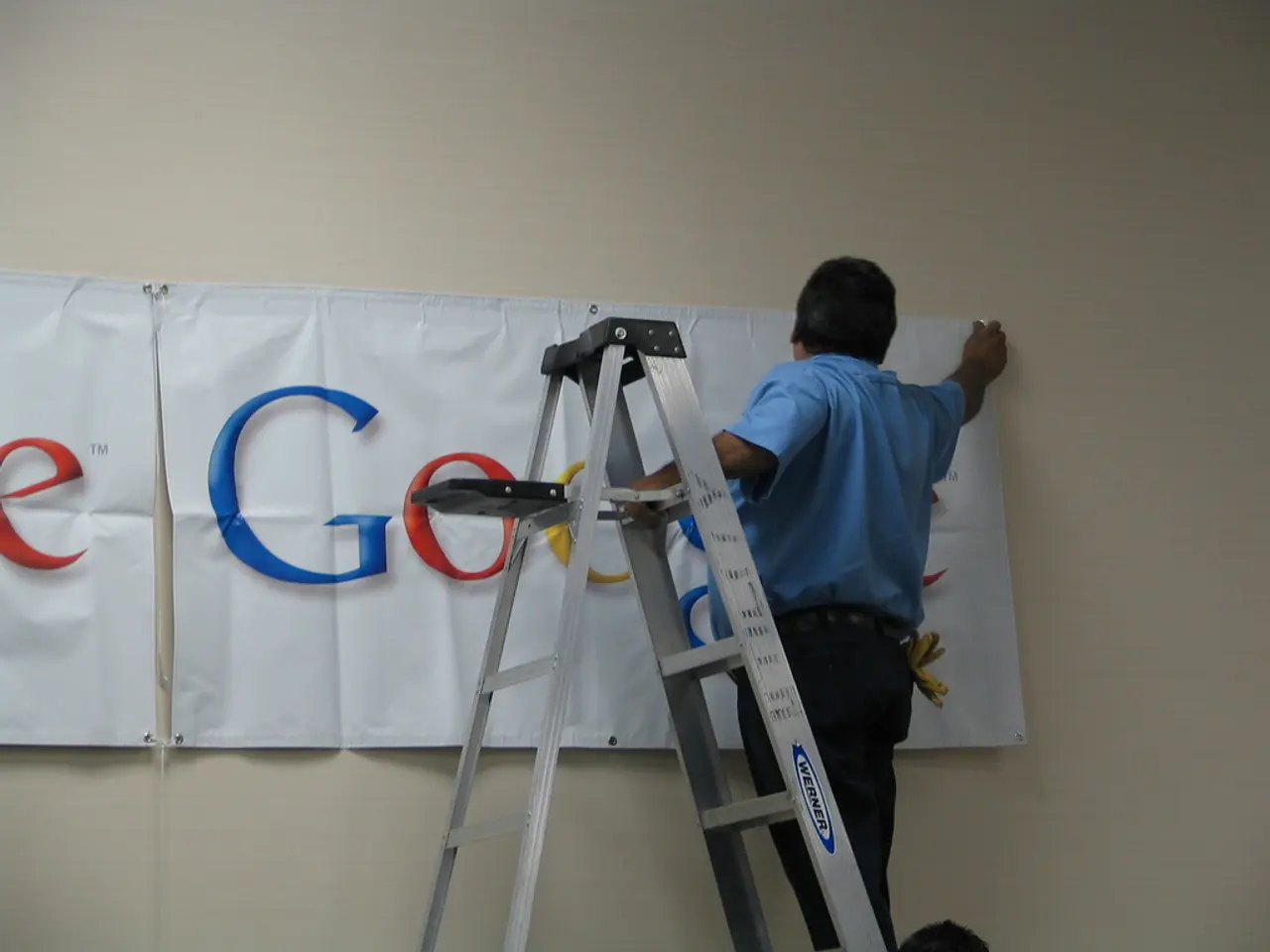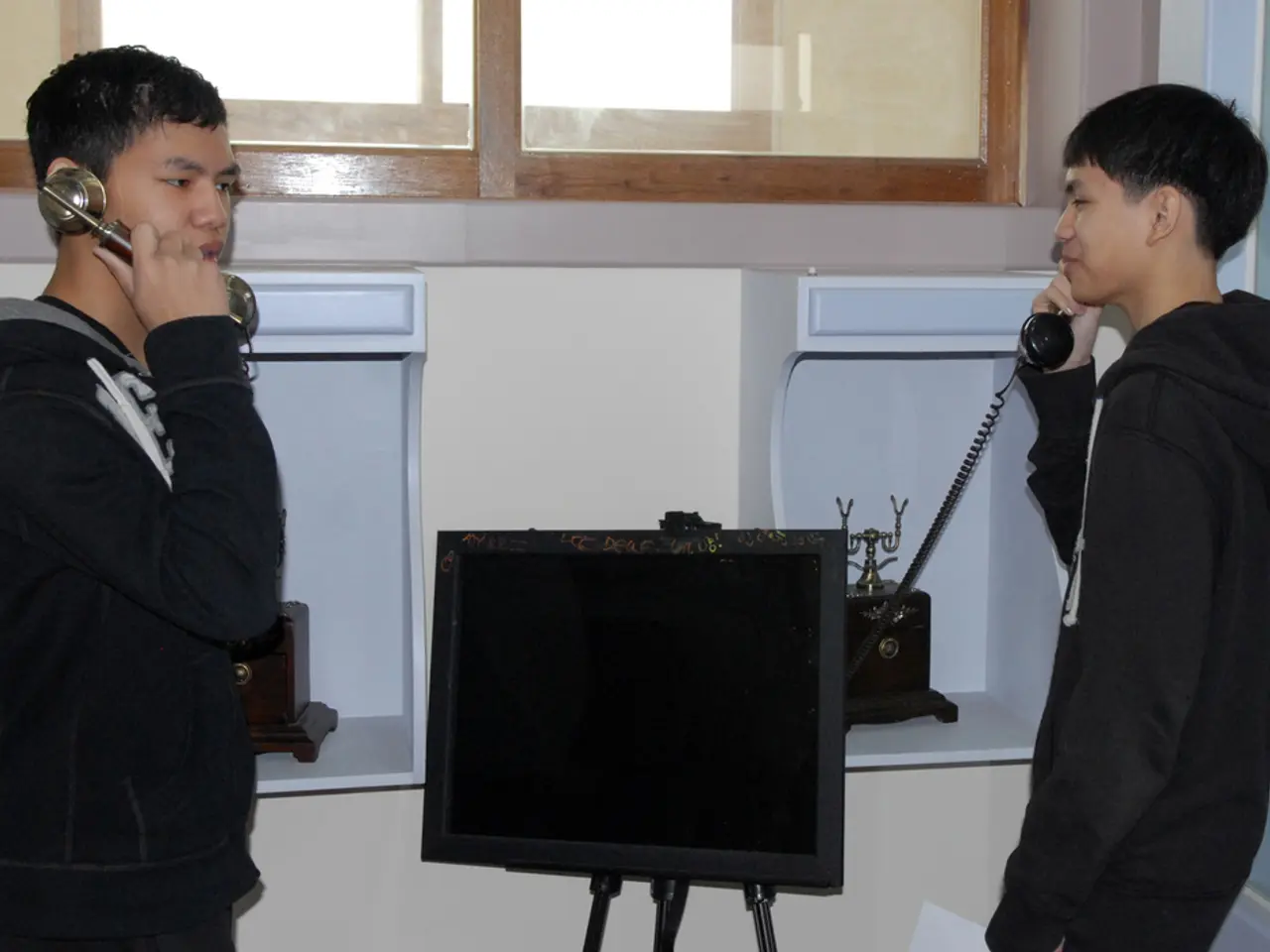Satellite Television's New Frontier: Starlink's Disruptive Impact on Traditional Systems
Revamped and Reinvented: Satellite Television Breakdown
Hey there! Let's get cozy as we dork out together on the topic of satellite television! 🚀📺
Satellite television is an ingenious method of broadcasting TV programming directly to your humble abode, using communication satellites. This is different from traditional terrestrial television, which relies on broadcasting signals through the airwaves or cable TV that uses physical wires.
Ready to dive in? Here's a quick breakdown of the satellite television process:
- Program Origination: TV programming, coming from networks, independent broadcasters, satellite broadcasters, or cable channels, is bundled up and sent to a broadcast center.
- Uplink: At the broadcast center, the TV programs are encoded and compressed into a digital format, and then they're 'uplinked' or sent up to a satellite in space.
- Satellite: Up in the cosmos, the satellite receives the signals, amplifies them, and transmits them back to Earth - each satellite can carry multiple channels for us to enjoy.
- Downlink and Reception: The signals are picked up by a satellite dish at your location (imagine a big shiny mirror pointing upwards). The dish focuses the signals onto the feedhorn, which then passes them onto the satellite receiver.
- Decoding and Viewing: The satellite receiver, often a fancy box, decodes the digital signals, turning them into a format that can be displayed on your TV screen.
Not that different from a game of catch, right? But with more complicated steps and an extra celestial body in the mix! 💖🚀
One cool thing about satellite television is that it offers high-definition (HD) and 4K quality viewing. Keep in mind that the quality of the broadcast can be affected by weather conditions, as heavy rain or snow can disrupt the signal (boo!).
To get in on this cosmic spectacle, you'll need a satellite dish and a receiver box. The dish needs to be pointed in a specific direction (towards the satellite broadcasting the channels you want to watch). You might even need multiple dishes for different packages of channels.
Satellites Used for Broadcast Television
Satellites used for satellite television are usually geostationary satellites. These satellites orbit the Earth at a speed that matches the Earth's rotation, making them appear stationary from our vantage point. They sit about 35,786 kilometers above the Earth's equator, and they can last for many years before they run out of fuel and have to be replaced.
These satellites carry transponders, which are devices that receive signals from an Earth station and retransmit them back to Earth. Each satellite can carry multiple transponders, with each transponder capable of carrying multiple TV channels.
Terminology
Here's a quick rundown of some terms that might pop up as we journey through satellite television:
- VOD (Video On Demand): This is a system where users can select and watch video content whenever they want, rather than at a scheduled broadcast time.
- SVOD (Subscription Video On Demand): This is a service that offers users unlimited access to a wide range of programs for a monthly fee.
- TVOD (Transactional Video On Demand): Users pay for each piece of content they watch, like renting or buying digital copies of movies or TV shows.
- AVOD (Advertising-based Video On Demand): These services provide free content to users, but they generate revenue through advertising.
- OTT (Over The Top): This refers to content providers that distribute streaming media as a standalone product directly to viewers over the internet without using traditional broadcast platforms.
- DTC (Direct-to-Consumer): This refers to the distribution of content directly from the producer to the consumer, bypassing traditional distribution channels.
- IPTV (Internet Protocol Television): This is a system for delivering TV content over the internet using internet protocol technology.
- MVPD (Multichannel Video Programming Distributor): This term refers to services that provide multiple television channels, like cable and satellite TV services.
- vMVPD (virtual Multichannel Video Programming Distributor): These are services that provide multiple TV channels over the internet, without providing their own data transport infrastructure (like cables or etc.)
- Pay TV: This generally means cable TV, satellite TV, and IPTV.
Examples of Ecosystem Players
SES
SES is a satellite operator/service provider that makes money by leasing out satellite capacity and providing related services to broadcasters, content providers, and customers. They offer the following revenue streams:
- Satellite Capacity Leasing: SES owns and operates a bunch of satellites, each with a limited amount of transponder capacity (these can be thought of as data transmitters). SES leases this capacity to broadcasters and content providers, who use it to distribute their programming to cable systems, direct-to-home (DTH) satellite services, and other distribution platforms.
- Service Contracts: Along with leasing satellite capacity, SES provides a variety of services to its customers, including uplinking, downlinking, encryption, and signal compression. They earn money by charging for these services under contract.
- Managed Services: For some customers, SES also provides end-to-end solutions, handling the production, encoding, and distribution of content, from initial creation all the way to end-user reception. These services typically command higher fees.
- Occasional Use and Special Events: SES also provides services for occasional use, such as live broadcasting of sports, news, or concerts events, with the users paying per occasion.
DISH Network
DISH Network is a company that offers satellite television services in several roles:
- Satellite Television/DTH Provider: DISH Network provides satellite television services directly to consumers, competing with other providers like cable TV, other satellite TV providers, and streaming services.
- Multichannel Video Programming Distributor (MVPD): DISH Network is also considered an MVPD, which refers to companies that provide multiple television channels to consumers through various means, including cable TV and satellite.
- Content Provider: Sometimes, DISH Network also serves as a content provider, by offering exclusive channels and content to its subscribers or owning streaming services like Sling TV.
- Telecommunications Service Provider: In a broader sense, DISH Network can be classified as a telecommunications service provider, offering a range of communication and entertainment services to consumers.
In the context of a relationship with a satellite service provider like SES, DISH Network would typically be the customer or client, contracting for satellite capacity and services.
Stay tuned for more exciting adventures in satellite television! 🎬🚀
- The space economy, particularly in environmental-science and advanced technology, is significantly impacted by the management of orbital debris, a threat to satellites used for telecommunications, broadcast television, and space-and-astronomy research.
- The integration of satellite television into our lifestyle has not only revolutionized telecommunications but also introduced new sports broadcasting opportunities, allowing us to witness global events in real-time.
- The science behind satellite television is fascinating, as the technology surpasses the boundary of our atmosphere to transmit signals from Earth to geostationary satellites, which then beam them back to our homes.
- The environmental-science field is exploring ways to minimize the impact of the booming space-and-astronomy industry on our ecosystem, addressing concerns about the environmental footprint of satellites and the rocket fuel used for their launch.
- As we continue to advance in technology, the possibilities for satellite television extend beyond entertainment and communication, with applications in lifestyle, sports, and even environmental-science research ongoing and promising.








